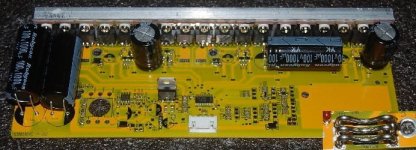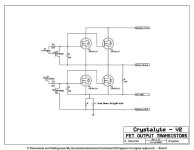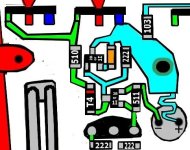getadirtbike
10 W
Hi Guys,
I'm having a problem with my V2 controllers running 4110 FETs at around 72V and 50A.
After taking one apart I noticed that the leg of the Cap in the photo had blown off and I'm assuming that one of the FETs is shorting due to the wheel being very hard to turn. Also, the rest of the board looks totally fine... no signs of overheating at all, so I'm assuming it's a shorted FET.
I had a similar problem with a controller a while back which blew the other 2 capacitors on the board but continued to run until what I would assume was a spike also blew or shorted the FETs......... See the first few pages of this thread..... Those 2 caps appear to be fine this time.
I'm assuming the capacitor went first just by flicking through this thread, but I can't exactly work out how to stop it from happening again.... I mean... put larger capacitors in it seems obvious, but what values? Run them in series or parallel? I'm assuming that a shorter battery lead also makes a difference.
One thing to note is that in my application the wheel might leave the ground for 2-3 seconds with the throttle held on full, and then hit the ground again while still at full throttle. I know this is most likely what is doing it, but rather than change the riding technique how can I make the controller resistant to this type of abuse?
If any response could be given in laymans terms it would be much appreciated.
I'm having a problem with my V2 controllers running 4110 FETs at around 72V and 50A.
After taking one apart I noticed that the leg of the Cap in the photo had blown off and I'm assuming that one of the FETs is shorting due to the wheel being very hard to turn. Also, the rest of the board looks totally fine... no signs of overheating at all, so I'm assuming it's a shorted FET.
I had a similar problem with a controller a while back which blew the other 2 capacitors on the board but continued to run until what I would assume was a spike also blew or shorted the FETs......... See the first few pages of this thread..... Those 2 caps appear to be fine this time.
I'm assuming the capacitor went first just by flicking through this thread, but I can't exactly work out how to stop it from happening again.... I mean... put larger capacitors in it seems obvious, but what values? Run them in series or parallel? I'm assuming that a shorter battery lead also makes a difference.
One thing to note is that in my application the wheel might leave the ground for 2-3 seconds with the throttle held on full, and then hit the ground again while still at full throttle. I know this is most likely what is doing it, but rather than change the riding technique how can I make the controller resistant to this type of abuse?
If any response could be given in laymans terms it would be much appreciated.





